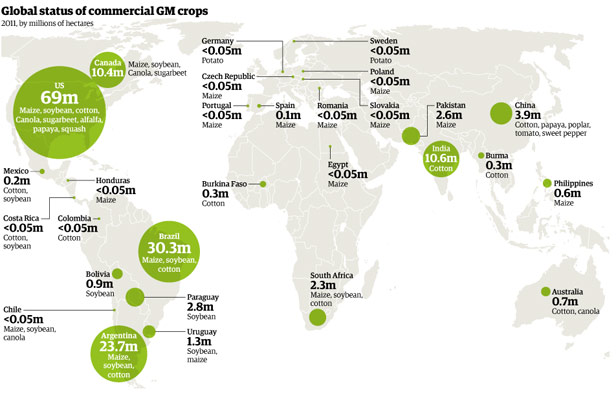Which Countries Grew the Most GM Crops in 2011?
Farmers around the world used 160 million hectares to grow biotech crops in 2011–12 million more than in 2010–according to a new report by the International Service for the Acquisition of Agri-Biotech Applications (ISAAA), a government and industry funded group that promotes the use of biotechnology in agriculture.
Around two thirds of that growth occurred in developing nations, which in 2011 held around half of the total land used to grow genetically modified crops. Among these nations, Brazil led the way with 30.3 million hectares of maize, soybeans, and cotton. The United States maintained the overall lead, with 69 million hectares devoted to eight different crops.
The Guardian created this handy visualization based on the data, which was released earlier this week. It shows total hectares by country, and the specific genetically modified crops grown in each country.

Keep Reading
Most Popular
Large language models can do jaw-dropping things. But nobody knows exactly why.
And that's a problem. Figuring it out is one of the biggest scientific puzzles of our time and a crucial step towards controlling more powerful future models.
How scientists traced a mysterious covid case back to six toilets
When wastewater surveillance turns into a hunt for a single infected individual, the ethics get tricky.
The problem with plug-in hybrids? Their drivers.
Plug-in hybrids are often sold as a transition to EVs, but new data from Europe shows we’re still underestimating the emissions they produce.
Stay connected
Get the latest updates from
MIT Technology Review
Discover special offers, top stories, upcoming events, and more.